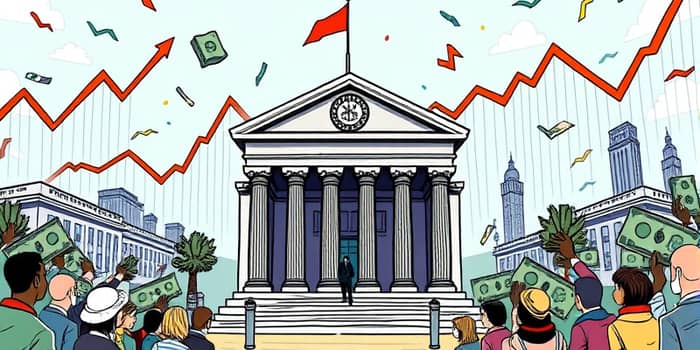
Quantitative Easing (QE) has reshaped modern monetary policy. This guide unfolds its purpose, history, mechanisms, and impact in clear, data-driven terms, equipping readers with a solid foundation to understand one of the most powerful tools central banks wield when traditional interest rate policy hits its limits.
At its core, QE is an unconventional monetary policy tool employed by central banks to revive economic activity when standard rate cuts are exhausted. Instead of adjusting the policy rate, the central authority creates money to purchase assets directly from financial institutions.
The primary goal is to inject liquidity and lower long-term rates, making borrowing cheaper for households and businesses. By expanding the monetary base, QE aims to spur lending, boost spending, and ultimately support employment and growth.
The process unfolds in several stages:
Through these steps, QE fosters an environment where portfolio rebalancing boosts risky asset demand and capital flows into sectors that depend on investment, reinforcing the cycle of spending and growth.
QE emerged as a term coined by economist Richard Werner and gained prominence after the 2008 crisis. Central banks worldwide embraced it to combat deep recessions.
In the United States:
The Bank of England’s QE program between March 2009 and January 2010 involved £200 billion in asset purchases (about 14% of UK GDP). Real GDP peaked 1–3% higher and CPI inflation rose by 1–1.4 percentage points compared to a no-QE baseline.
QE operates through multiple paths to the real economy:
Empirical evidence generally points to positive effects on growth, inflation, and employment, though magnitudes vary across studies. In the U.S., GDP growth lifted by 1–3%, and unemployment fell by roughly 1.5 percentage points below what it might have been without QE.
Financial stability also improved as credit markets normalized and yields fell across asset classes. For governments, lower interest rates translated into substantial savings on trillions of dollars of debt.
Despite its successes, QE carries potential downsides. Critics warn of future financial instability risk if prolonged asset purchases encourage excessive risk-taking and fuel bubbles.
Concerns about wealth and consumption inequality arise because asset price gains disproportionately benefit wealthier households. While inflation fears loom in theory, many advanced economies experienced muted price pressures post-2008.
Finally, the eventual rollback—quantitative tightening—poses challenges. Shrinking central bank balance sheets may raise yields and threaten the fragile recovery they once nurtured.
The table below highlights how QE differs from traditional rate cuts and its counterpart, quantitative tightening:
Quantitative Easing represents a bold intervention when economies face severe downturns and traditional tools are exhausted. By injecting liquidity and lowering borrowing costs, QE can spark a cycle of spending, investment, and growth. Yet its legacy demands careful scrutiny of risks like asset bubbles and inequality.
For beginners, understanding QE is vital to grasping how central banks tackle crises and support recovery. Armed with this guide, readers can appreciate both the promise and the complexities of this powerful monetary policy instrument.
References





